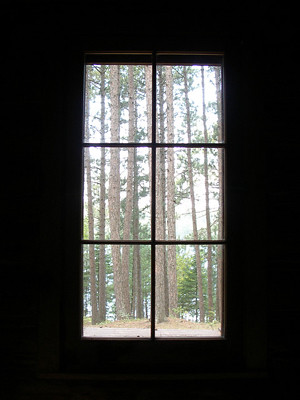There are many similarities between the world’s religions, so much so that some think that all religions are just different paths to the same end. As a result, new ways of thinking and new religions have been constructed to promote this ideal such as New Age spirituality or the Bahá'í faith. But do all of the many paths lead to the same place? I don’t think that they do, because while there might be so many superficial or even uncanny similarities, there are also many fundamental and mutually exclusivizing differences.
My query begins at this point: parallels...what does it mean exactly?
<< Preface East Meets West: I East Meets West: II >>
It’s difficult for any nondevotee to really understand another’s religion. Krishna said, "Having gained this knowledge, one quickly attains supreme peace or liberation. The irrational, the faithless, and the disbeliever perishes. There is neither this world, nor the world beyond, nor happiness for the disbeliever." On a simpler level what I think he’s saying is that even if you read the scripture and study the religion, if you don’t have the faith, you just won’t "get it". This would be applicable to any religion, but there is more to it than this. Religion is not only about what one studies and believes, it is not only about what one does and how one lives, it is about Who one loves and how one gives them devotion and service.
This is just as true in Christianity as it is in Hinduism, but I think that it is helpful to begin by thinking of Hinduism as really more of a cultural framework (than a singular religion) in which are found many varying schools of thought, religions* (yogas**), and cults***.
*religion comes from Latin and means to bind, so a religion is a system in which someone is bound by and to that which and to whom they believe (see cult 3). This does not need to imply the supernatural in any way, as based on this definition scientism, humanism, atheism, etc are all beliefs that bind conscience and behavior and can therefore be construed as religions. However, the most common context for religion is spiritual or supernatural and so is a system of how one is bound to or united with a god or spirit. In Christianity, for example, we hear Jesus say, "take up my yoke upon you, and learn of me."
**yoga comes from Sanskrit and means to yoke, so from an etymological standpoint, religion and yoga are equivalent. This is particularly true when yoga is used in its broadest sense where it is the process of attaining union with the Ultimate Reality. But there are also many types or schools of yoga. Of particular interest in this context is bhatki yoga, which is the spiritual practice of rendering loving devotion to God. Many in the west are also familiar with hatha yoga, which involves physical and mental exercises practiced so as to order the mind, command the body, and control the passions. For some this is the end in itself, but in the greater context of yoga, these exercises are part of the discipline of devotion and the process toward union.
***cult should always be used in the nonpejorative sense: 1. formal religious veneration; 2. a system of religious beliefs and ritual; 3. a great devotion to a person (deity), idea, or object.
The reason why one should think of Hinduisms instead of simply Hinduism is because there are so many fundamental differences in cosmology, theology, and praxis between the various schools, but instead of looking at this time at these differences within Hinduism, I’m more interested in looking at the first fundamental difference between Christianity and Hinduism.
What’s the matter?
What is the value of the material universe? The Judeo-Christian view on matter is "and God saw all the things that he had made, and they were very good. And the evening and morning were the sixth day." Since this is the end of the "sixth day", we know that includes every aspect of the created universe including that uniquely spiritual-material being...the human person.
Now not everyone thinks that matter is so good. There have been many sects, who have believed that matter, and therefore the universe is either profoundly flawed or even evil, and that the person is essentially solely a spiritual being who is trapped in a human body, i.e. degenerate or evil matter. Within the western traditions, Gnostics (Manicheans, Bogomils, Albigensians (Cathars), and Waldensians) are some sects that have held some combination of such beliefs. Carried to the extreme, such beliefs have perpetuated an encouragement of sodomy, contraception, and abortion for the purpose of preventing spiritual beings from being incarnated into matter and even encouraged suicide and euthanasia for the purpose of liberating spirits from their material existence. Christianity has rejected all of these means and all of these ends, although some protestant sects have backtracked on this rejection in the past century.
Indeed, Christianity is centered upon an incarnate God...a God who saw that His creation was essentially good, yet in need of redemption, and assumed form within it. Back to Hinduism, we also see a tradition of the Ultimate Reality or Supreme Personality of Godhead assuming material, human form millions of times. Since it’s unlikely that divinity would pollute itself with something that is essentially evil, it then would then be reasonable that the Hindu view is that matter is not evil. However, and this is a big however, common to probably most schools of Hindu and also Buddhist thought, is the concept of maya in which the material world is a lesser reality and a form of illusion to be overcome. This leads to the common view and goal in both Hinduism and Buddhism of the final release of the individual soul from any reincarnation into material existence. What this in turn results in varies by school. For some it is the extinction and absorption of the personality into either nothingness or into Godhead, and for others it involves the preservation of the personality while achieving union with Godhead. In contrast, Christianity teaches the resurrection of the material body into a glorified form, while also preserving the personality and achieving union with God.
There’s a lot more to the matter of matter, and there are many more religions to survey for differences, but the important thing to take notice of in this brief survey is that the understanding of the very nature of the universe and the human body is fundamentally and radically different in various religions, whether these things are essentially good, neutral, or evil is of no little difference. Returning to the question do all of the many paths lead to the same place? Well, the various paths usually state where they believe they lead, and we can see that some paths claim to lead to different, similar, or the same place. Since there’s a world of difference between annihilation and a personalist union with God, why then, should anyone maintain that all paths lead to the same end?










